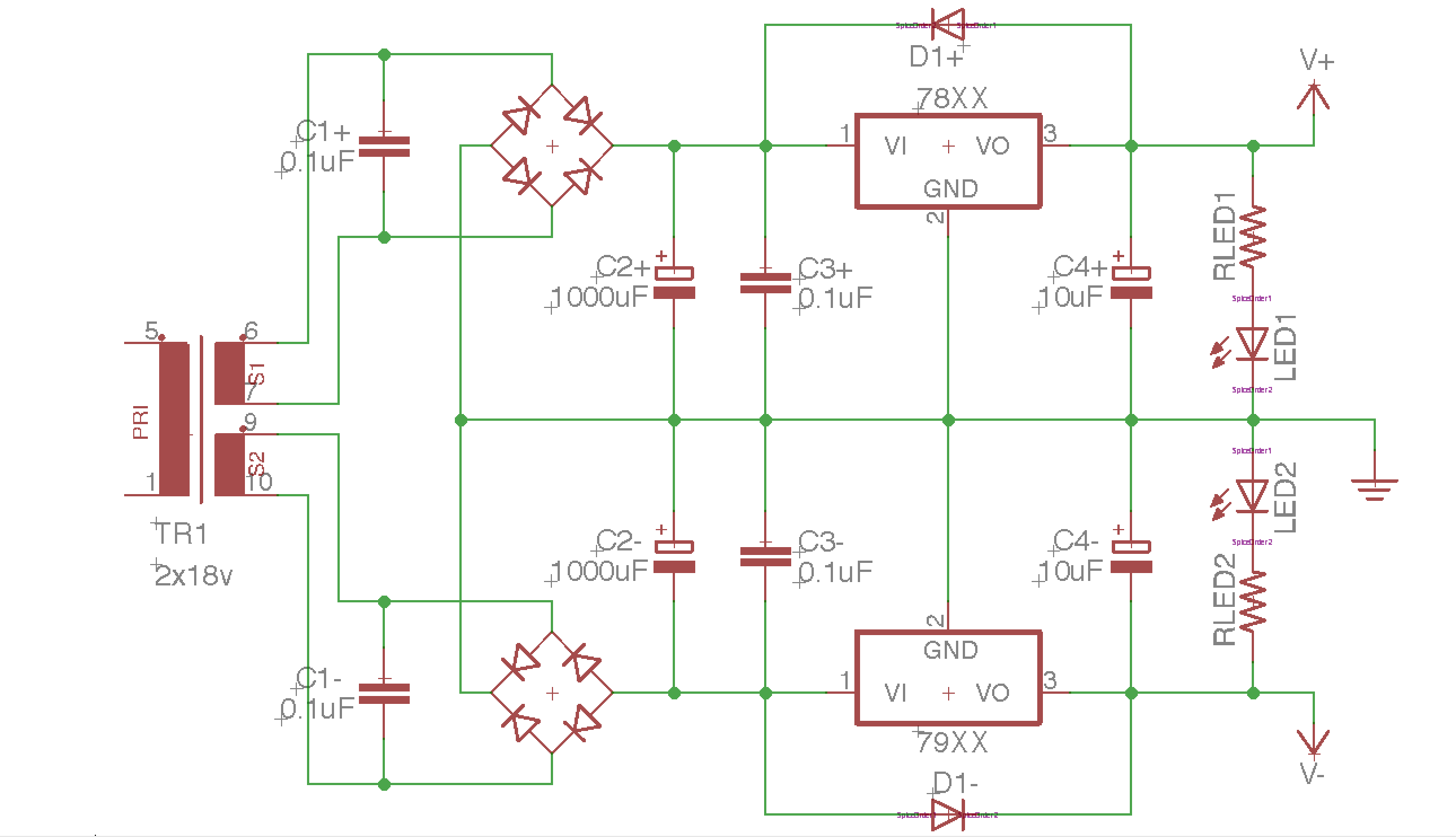I'm looking to build a dual-rail, regulated, 18VDC power supply based on the 78xx and 79xx regulators. The circuit is inspired by AMB Audio's sigma25 (amb.org/audio/sigma25/) and sigma26 (amb.org/audio/sigma26/) regulated power supplies. I have also Googled around and came across these:
- eleccircuit.com/wp-content/uploads/2008/10/dual-variable-regulator-power-supply-5-25v-by-lm7805lm7905.jpg
- eidusa.com/Interface_Boards_PN15_PS.htm
However, I am torn between using a 2x9V transformer and connecting the secondaries as such, using only 1 bridge rectifier to supply both regulators:
 ...and using a 2x18V transformer, each secondary feeding its own bridge and regulator, as such:
...and using a 2x18V transformer, each secondary feeding its own bridge and regulator, as such:
 What are the pros and cons between the two, apart from (slightly) more parts count in the latter schematic?
What are the pros and cons between the two, apart from (slightly) more parts count in the latter schematic?
Many thanks for any enlightenment given.

